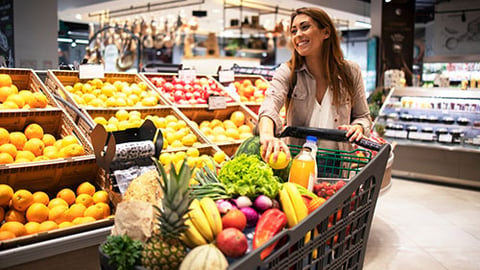Catering to Gen Alpha, a Foodie Generation
Curious about the significance of food culture for the youth generations? Look no further than the fast-paced online food trends they’re following, from mukbangs to spice challenges. In fact, Beano Brain’s recent Food for Thought report found that Gen Alpha is a global foodie generation. But are brands and grocers supporting this food curiosity while meeting families’ evolving needs?
The year-long study based on more than 3,000 interviews with kids and parents in the United States and the United Kingdom revealed 32% of kids love trying new foods, especially those inspired by global flavors. From sushi and ramen to bibimbap and Korean BBQ, Gen Alpha isn’t afraid to spice things up.
[RELATED: Encouraging Kids to Eat Healthfully]
But fostering Gen Alpha’s adventurous tastes isn’t necessarily easy. Prices are increasing – in fact, 79% of parents are overwhelmed by grocery costs and 31% have started working extra hours or an additional job to pay for things. Busy lives are also proving to be an obstacle, with 52% of parents struggling to find enough time to plan and prepare meals for their families.
So you’ve got a food dichotomy: a foodie generation, with parents facing a number of food-related obstacles, from a cash crunch to being time poor. This is where brands and grocery stores can step up. By aligning Gen Alpha’s desires as well as the needs of their Millennial parents, brands and retailers can become genuine family food champions.
Feeding Curiosity
Today’s kids are deeply engaged in food culture. They follow food influencers on TikTok and YouTube, and share snack hauls. Walk into many U.S. grocery store chains, however, and you’ll still find kids’ products designed around cartoon mascots and sugar overloads — think Chester the Cheetah, The Kool-Aid Man and Lucky the Leprechaun.
The stereotype of the junk-food-demanding picky eater is outdated. Many Gen Alphas are sophisticated foodies, with 32% actively seeking new culinary experiences. Additionally, only 27% of kids claim to be “selective eaters,” but these kids simply know what they like and what they don’t.
This passion for food has developed through exposure to global cuisines and cultures, both digitally and physically. Multicultural communities, parents’ own expanded food horizons and social media are helping create a generation of culinary globe trotters.
Parents Navigating New Pressures
The financial pressures U.S. parents face can make healthy eating feel like a luxury, however. The report revealed that 31% of parents are working extra hours or picking up a second job to pay for groceries. And it’s not just money that they’re short of – they’re also time poor. More than half of parents struggle to find enough time to plan and prepare meals for their families.
Food still remains the cornerstone of cultural and family identity, however, with 76% of parents prioritizing food traditions and 67% using meals to express heritage. The vast majority (86%) of families also consider eating together a special time, with food serving as a powerful bridge between generations and cultures.
There’s an opportunity for brands and retailers here. From offering clear nutritional information and ingredient sourcing on packaging to developing value-focused product lines that don't compromise on quality, brands and retailers can raise the bar and match the aspirations of Gen Alpha and parents.
Empowering Kids to Cook
Nearly half of Gen Alpha kids say that they love cooking with family members, but parents often say no because they’re rushed or overwhelmed.
Brands and retailers could foster food creativity and help parents, gaining the trust of both generations. Kid-friendly recipe cards and food bundles with instructions can make it easy for kids to help prep meals. These can include graphics on chopping safely and food hygiene, outlining who takes on what responsibilities so that Mom and Dad can rest assured the food is in safe (and clean) hands.
Partnerships with popular kid food influencers on YouTube can also be established to spark further food adventures and a flair for cooking among Gen Alpha.
Cooking together creates stronger emotional ties within families, and being there to support these connections can build deeper loyalty for brands and retailers.
Key Takeaways for Brands and Retailers
In these challenging times, parents need support from brands and retailers, with 78% believing that brands could do more to help them make healthy choices, compared with only 17% that think the government should be responsible for helping make these choices. How can brands and retailers best step up?
- Value goes beyond pricing: Address families’ financial pressures but demonstrate where else you can bring value, from transparency on healthy choices to reducing prep time.
- Champion culinary curiosity and support healthy eating habits: Feed Gen Alpha’s appetite for culinary exploration and help parents cook healthy options.
- Food is about family and culture, not just fuel: Help families celebrate cultural heritage and special moments while elevating everyday moments to make eating a bit more magical
A foodie generation and the cost-of-living crisis have created opportunities for brands and retailers to become genuine family food champions.
Marketing should focus on transparency, quality and value, demonstrating a keen understanding of food’s deeper role in family life. A child's best food memories come from feeling connected and joyous – what’s on the plate comes second.
Brands and retailers that find a role within these moments while supporting families’ practical needs will earn their place in both shopping baskets and family memories.






